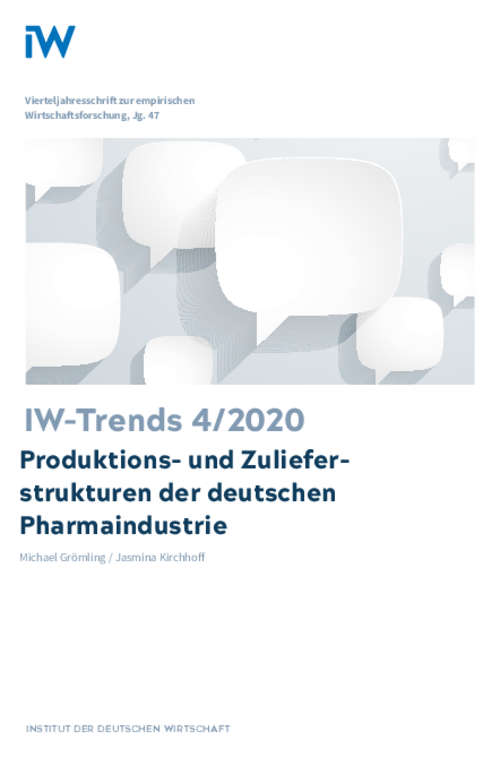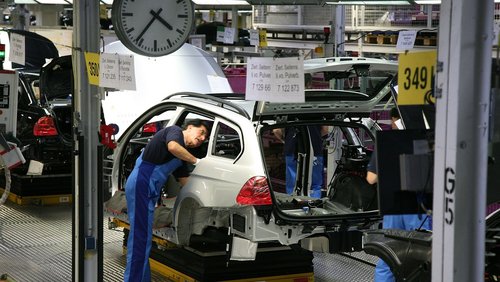The corona pandemic has reinforced earlier calls for national sovereignty over critical technologies, with policymakers, the business world and society as a whole focusing their attention particularly on the pharmaceutical industry.

Production Structures and Supply Chains in the German Pharmaceutical Sector: How Dependent Is the Industry on Foreign Sources?
IW-Trends

The corona pandemic has reinforced earlier calls for national sovereignty over critical technologies, with policymakers, the business world and society as a whole focusing their attention particularly on the pharmaceutical industry.
This article examines the dependencies that could affect production in Germany’s pharmaceutical sector. An empirical survey of the status quo using a number of different data sources is followed by an examination of how production structures and the dependencies they can involve have developed over time. The division of labour is less pronounced in pharmaceuticals than in German industry as a whole and the sector's own value creation is much more significant. Since the early 1990s the nominal and real input ratio for pharmaceuticals has fluctuated between 45 and 55 per cent, with a quarter of supplies coming from within the sector. There are clear differences between domestic inputs, consisting primarily of services, and supplies sourced abroad, which are largely of manufactures. In recent years, foreign intermediate inputs have increased at the expense of domestic procurement. Imports of intermediate ingredients are clearly concentrated on neighbouring countries in Europe, with more than three-quarters of all pharmaceutical inputs as well as of imported active pharmaceutical ingredients by value coming from the European Union and Switzerland, while 17 per cent of the active pharmaceutical ingredients come from Asia. In volume terms, Asia has a considerably higher share. The analysis does not suggest that German pharmaceutical production is predominantly dependent on inputs from China. However, this does not preclude the possibility that for certain specific products, especially in the low-price segment, manufacturers depend on a small number of Chinese suppliers for their active ingredients.

Michael Grömling / Jasmina Kirchhoff: Produktions- und Zulieferstrukturen der deutschen Pharmaindustrie
IW-Trends

More on the topic

Further training needs of the automotive industry in transformation
Due to the ecological and digital transformation, significant parts of the German economy, particularly the industrial sector, are currently undergoing a transformation. This development also extends to the automotive sector, which occupies a vital position in ...
IW
Valuing Companies' Data
Data is becoming increasingly important both for companies and for national economies. Since the full potential of business data can only be realised when several users exploit it simultaneously, data sharing is also becoming more common.
IW